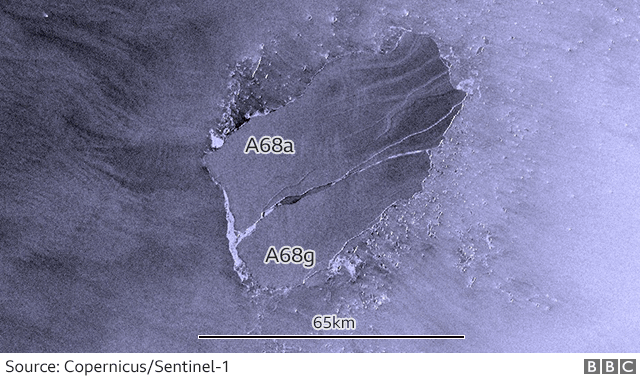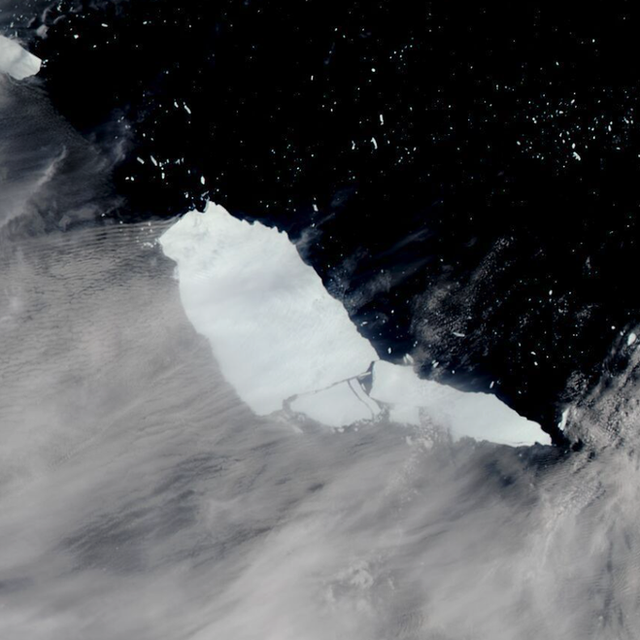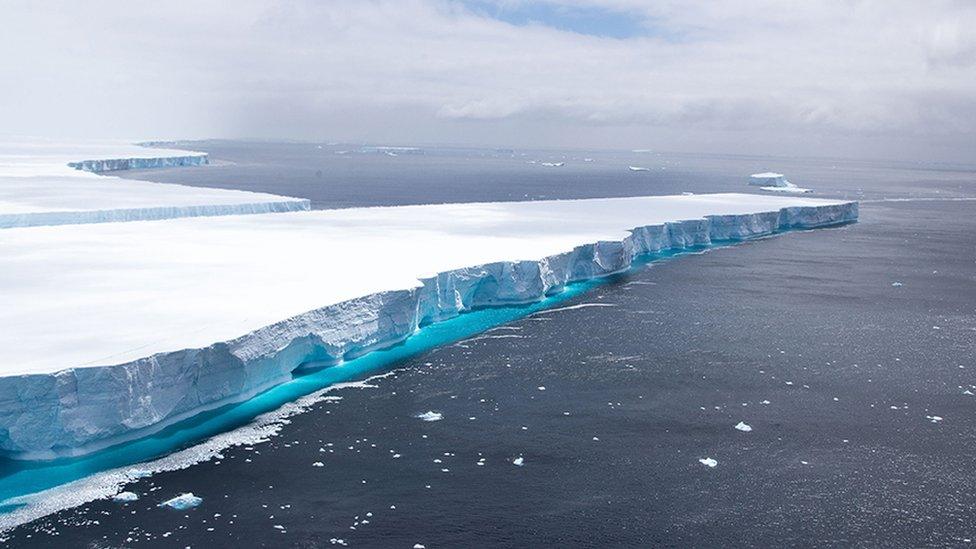Split signals end for remnant of Antarctic iceberg A68a
- Published

A satellite radar image: The larger fragment will retain the A68a name
The once-mighty iceberg A68a looks to be in its death throes.
The largest fragment from a block of Antarctic ice that originally measured some 5,800 sq km (2,240 sq miles) in area has suffered another major split.
Satellite imagery shows at least two segments drifting close together about 135km south-east of the British territory of South Georgia. They will no doubt soon move further apart.
For more than three years, A68a was the biggest iceberg in the world.
At its greatest extent, it was about a quarter of the size of Wales - or New Jersey or Israel.
But warmer climes and more aggressive seas gradually pulled it apart as it moved northwards away from Antarctica into the South Atlantic.


Icebergs are named in sequence, with the prefix letter denoting the quadrant of the white continent from where they calved, with the number recording their position in that sequence.
Each subsequent major fragment to come off the original block then gets a lettered suffix.
Before Thursday, this nomenclature process had got up to A68f. After this latest split, the larger portion will retain the name A68a with the smaller one getting the new name of A68g.
The US National Ice Center, which oversees the naming system, issued a release on the topic late on Thursday, external.

23 December: Nasa's Aqua satellite views the break-up of "the pointing hand"
Towards the end of last year, A68a looked from space like a huge pointing hand. Its still significant bulk prompted fears that it could disrupt life on South Georgia should it become grounded just offshore in shallow water.
The concern was that the presence of such a large obstacle might disrupt the foraging behaviour of the island's many penguins and seals.
With the latest disintegration event, the danger of this scenario seems to have passed.
A major question now is whether the scientific expedition that was aiming to study the iceberg will have anything left to observe by the time it arrives on site.
Researchers will soon board the British Royal Research Ship James Cook in the Falkland Islands and sail east towards South Georgia.
They have other, unrelated investigations to pursue as well, but they were hoping to place some autonomous vehicles around A68a to learn more about its impacts on the environment.
Their study subject has got considerably smaller since the expedition was announced in mid-December.

A68a broke off from Antarctica in 2017
